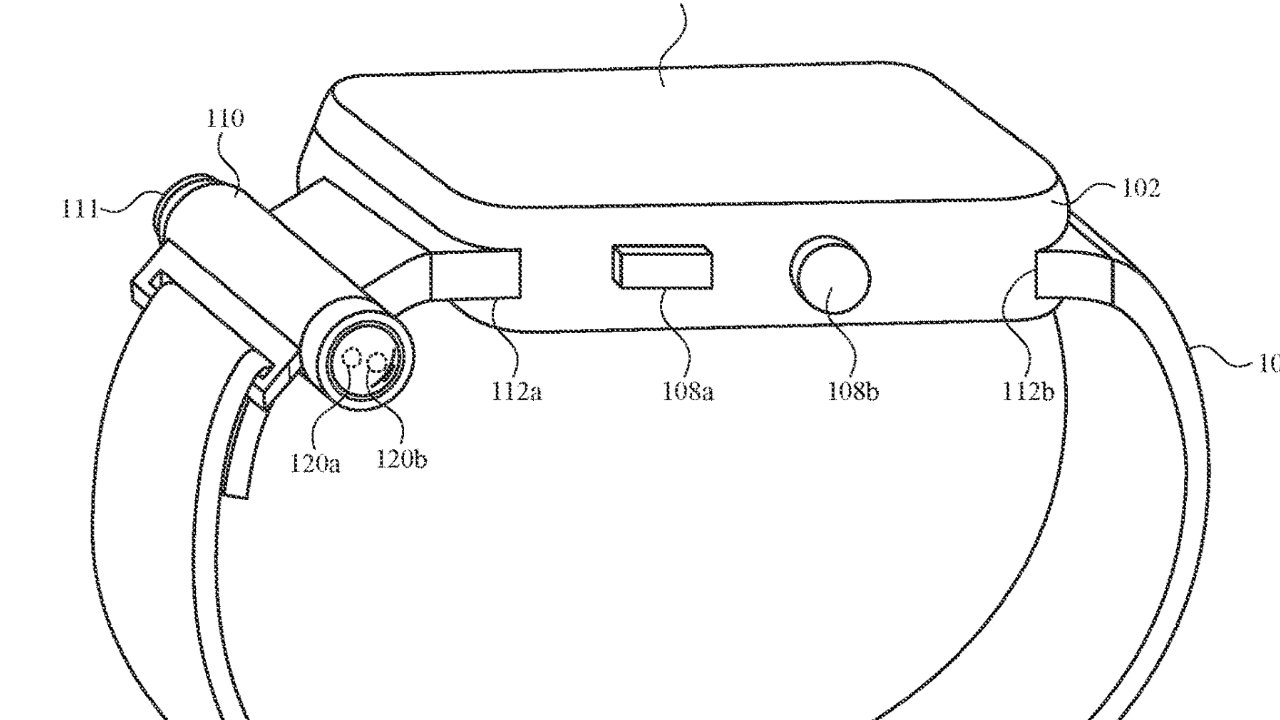Forget the little light you get from the Apple Watch screen, Apple is researching how to get a brighter external one fitted to a Watch band.

External, directional light on an Apple Watch
Apple Watch already comes with a flashlight, it's just not as well known as the one in the iPhone. That's because in comparison to the iPhone's flashlight, Apple rather hides that the Watch has one too.
Press the side button on an Apple Watch and then swipe down the screen until you see an icon of a flashlight. Just tap it, and prepare to initially be disappointed.
That's because what happens when you do turn on the flashlight is that the whole Apple Watch face turns completely white (or flashing white, or red, for attracting help).
At that point, you're looking at the face and it seems practically feeble. But that's because Apple doesn't want to shine a bright light into your eyes.
If you turn your wrist away, and you're in a dark enough area, you will see the light brighten considerably after a few moments. It's still not exactly blinding, and you are having to hold your arm at a funny angle to shine the light where you want, but it works well.
But seemingly not well enough for Apple.
For the company has been researching an alternative Watch flashlight, and the details are in a newly-granted patent application called "Modular Light Assembly For A Wearable Device."
This proposes ignoring the on-screen flashlight, and instead fitting a real one to the Apple Watch. It would go on the band, positioned close to the Watch chassis, and shine wherever you point, "separate from the display of the wearable device."
"Put another way," says Apple, "light sources..., when illuminated, generate visible light cast in a direction that is parallel, or at least substantially parallel, to an axis defined by a user's appendage (not shown) when the appendage passes through band."
Breakdown of what looks less like a flashlight, more like a sonic screwdriver
As ever with a patent application, the detail is all about how something could be done, and there is little about why you would do it. This time, though, there is a brief mention of a specific benefit, or at least a possible one if the light has its own battery.
"[When] the modular light sources includes a dedicated (i.e., separate) battery," says Apple, "the wearable device is less susceptible to the display draining the wearable device battery."
So we could have a brighter flashlight, it could be that we would be more usefully able to aim it where we want. And it might not drain the battery.
There is one more thing, though. This is the second time that this particular patent, or a very close version of it, has been granted. It may still not mean that Apple is serious about adopting the idea in a shipping product, but it does mean that the company is pursuing the idea.
The patent is credited to two inventors, including Daniel J. Hiemstra, who previously worked on a flat-edge design for the Apple Watch.
